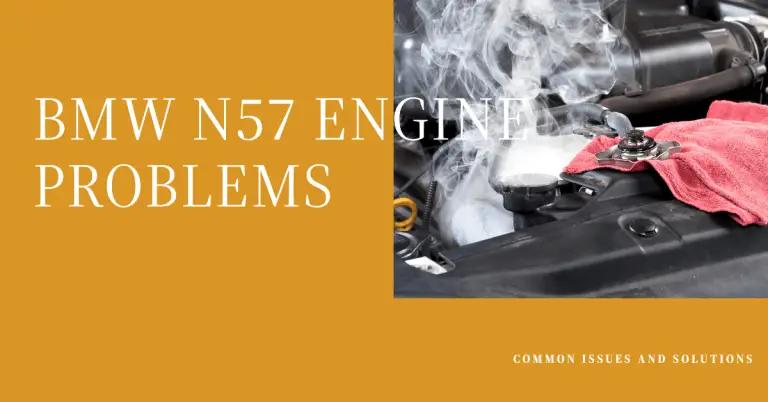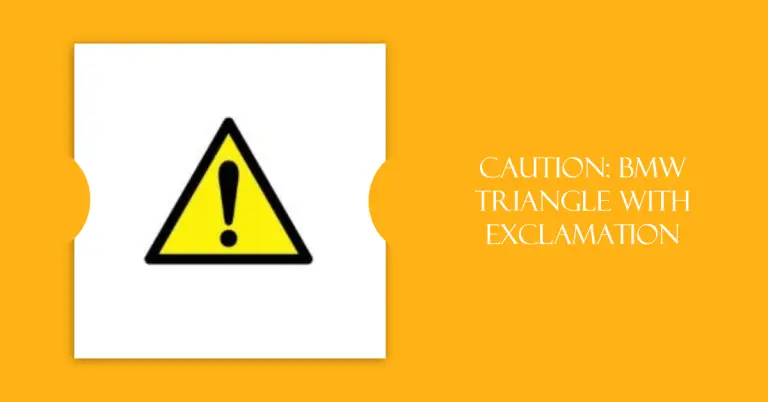BMW P0300: Causes and Fixes for Misfire Detected in Multiple Cylinders
Have you suddenly noticed your BMW engine running rough, misfiring, or lacking power? When you scanned the codes, did a P0300 pop up indicating random misfires in multiple cylinders? If so, you’re probably wondering what causes BMW P0300 code and how can you fix it? Don’t worry – this common engine code can often be resolved by replacing a few ignition components or sealing vacuum leaks. Read on and I’ll explain what P0300 means, what makes BMW motors misfire, and how to accurately diagnose and repair the problem.
What Does the P0300 BMW Code Mean?
The P0300 code means that your BMW’s ECU (engine control unit) has detected multiple random misfires across different cylinders in the engine. This occurs when the air/fuel mixture fails to ignite properly in 2 or more cylinders during the combustion process.
Misfires are typically caused by faulty ignition system components or a lack of proper fuel mixture preparation. When cylinders misfire, it causes a loss of engine power, stumbling/rough idle, poor acceleration, increased emissions, and damage to the catalytic converter over time.
It’s important to diagnose and repair the P0300 misfire code promptly to avoid expensive repairs down the road. Driving for long periods with multiple cylinder misfires can cause the catalytic converter to overheat and fail. Let’s look at what causes this annoyance next.
Common Causes of P0300 Code in BMWs
There are a few common issues responsible for setting the P0300 diagnostic trouble code in BMW models:
Faulty Ignition System Components
Problems with worn out or defective ignition system components are common culprits behind BMW multi-cylinder misfires. Here are some ignition parts that can cause P0300 when they fail:
- Faulty spark plugs – Spark plugs provide the spark that ignites the compressed air/fuel mixture in the cylinder. When the electrodes wear out or get fouled with carbon deposits, they can misfire under load. Inspect each plug when troubleshooting P0300.
- Defective ignition coils – The ignition coils amplify the voltage from the battery to generate a high voltage spark. If the coil windings fail, they won’t fire properly.
- Failed fuel injectors – Faulty fuel injectors can cause lean misfires if they get clogged and don’t spray enough fuel into the intake port.
- Worn distributor cap/rotor – On older BMW motors with distributor ignition systems, worn distributor caps and rotors can cause misfire issues.
If you have ignition parts that are long overdue for replacement, inspect each component and swap them out as needed. Weak sparks prevent proper ignition especially under acceleration.
Vacuum Leaks
Intake vacuum leaks are another common reason for BMW P0300 misfire codes. Here are some ways vacuum leaks happen:
- Cracked vacuum hoses – The plastic and rubber hoses that route manifold vacuum can crack over time, creating suction leaks.
- Leaking intake manifold gasket – The gasket where the intake manifold mounts can get old and leak, leading to unmetered air entering the cylinders.
Vacuum leaks allow unmetered air to enter the intake stream, creating a too lean condition in cylinders and misfires. Spraying carb cleaner near vacuum hoses and the intake gasket while idling can help sniff out leaks.
Low Fuel Pressure
An additional cause of lean misfires is when fuel pressure drops too low. Here are some fuel delivery issues that can trigger P0300:
- Clogged fuel filter – A restricted fuel filter reduces pressure, providing insufficient fuel for proper combustion.
- Faulty fuel pump – As the in-tank pump ages, its pumping capacity can weaken, leading to lower than normal fuel rail pressure.
- Damaged fuel pressure regulator – The regulator’s job is to maintain steady fuel pressure. If it fails, pressure can drop off causing misfires.
Checking for adequate fuel pressure and volume will help determine if pump issues are the culprit behind your BMW multi-cylinder misfires.
How to Diagnose P0300 Code in Your BMW?
Accurately diagnosing the cause of P0300 random misfires takes a logical, step-by-step approach. Here is how I would track down the source of the misfires:
Step 1: Retrieve Engine Diagnostic Codes
The first step is to scan for diagnostic trouble codes (DTCs) using an OBD2 scanner plugged into the data link connector under the dash. If P0300 is the only code set, it indicates a general misfire with no specific cylinder identified.
Write down any other codes present besides P0300, as they can provide clues. For example, additional cylinder specific misfire codes like P0301 or P0303 point to faults on those particular spark plugs or injectors.
Step 2: Perform an Engine Compression Test
Once you have the DTC information, do a compression test on each cylinder. Low compression indicates issues like leaking valves or worn piston rings.
Match up any low compression cylinders with specific misfire codes you retrieved. Low compression coupled with a P0302 for example would point to an issue on cylinder #2.
Step 3: Inspect the Ignition System
Next, thoroughly inspect the ignition components for any visible damage while removing them one by one:
- Check for fouled, damaged, or worn spark plugs. Measure the plug gap – if out of spec it can cause misfires.
- Inspect the spark plug wires and boots for cracking or corrosion.
- Check for oil leaks or cracks in the ignition coil packs. Swap coils between cylinders to isolate faults.
- Make sure the distributor cap and rotor contacts are not burned or corroded.
Replacing any ignition components that are past their service interval or show obvious damage can potentially fix BMW P0300 misfires.
Step 4: Check for Intake Vacuum Leaks
Vacuum leaks are tricky to detect visually. The best way is using a can of carb cleaner or brake parts cleaner while the engine is idling:
- Spray along the intake gaskets while listening for any change in RPM. If the engine speed rises, it indicates a vacuum leak.
- Similarly, spray along all PCV hoses and vacuum line connections. Bubbles emerging from a leak point is another sign.
- Inspect all rubber hoses for cracks, dry rot, and loose connections that can admit unmetered air.
Finding intake leaks this way takes patience – work methodically around the intake components while listening and looking closely for any airflow changes.
How to Repair BMW P0300 Misfire Code?
Once you’ve accurately diagnosed the root cause of the random misfires on your BMW, follow these repair guidelines based on the source:
Replace Any Faulty Ignition Components
If your diagnostic process revealed issues like failed ignition coils, fouled spark plugs, or bad injectors, replace each defective part one by one:
- Install new spark plugs and inspect the old ones – look for worn electrodes or heavy carbon fouling. Use a gauge to set the new plug gap to spec.
- Replace old brittle plug wires and boots with fresher OEM quality components. Apply dielectric grease inside the new boots to prevent corrosion.
- Swap ignition coils on different cylinders to isolate any dead coils. Always replace coils in pairs.
- Injectors that show leakage, have bad resistors, or are clogged need to be replaced and properly coded to the ECU.
Repairing any ignition issues this way often resolves BMW P0300 misfires for good. Always use OEM BMW components from a reputable parts supplier for reliable performance.
Repair Any Vacuum Leaks
If you detected intake leaks during your tests, fix them by:
- Replacing any vacuum hoses that are cracked, loose, or leaking. Inspect the small PCV breather hoses carefully.
- Retorque the intake manifold bolts to spec and replace the gasket if it’s dried out or crushed. Use a BMW approved intake gasket sealant during reassembly.
- Look for cracks or damage on crankcase vent hoses that allow unmetered air into the intake stream.
Properly sealing all vacuum leak points restores normal intake airflow and prevents lean misfires. Road test the car to verify smooth running with no Check Engine Light.
Adjust Fuel Pressure If Needed
For fuel delivery problems behind P0300:
- Replace a clogged fuel filter so there is no restriction to the pump.
- Test fuel pump output pressure and volume. A weak pump needs replacement.
- Inspect the fuel pressure regulator diaphragm – cracks cause low pressure and misfires.
Proper fuel system repairs will restore adequate fuel delivery to the BMW motor for clean combustion and no misfiring.
Top Off Engine Oil Level
One last simple thing – low oil levels can sometimes contribute to random misfires when the engine is under heavy load. Top up your BMW engine oil to the “Full” mark if it’s a little low just to rule it out as a potential factor. Keeping fresh oil definitely helps minimize sludge that can clog injectors over time.
Conclusion
Chasing down a P0300 misfire code on your BMW engine doesn’t have to be a painful diagnostic process. Methodically check ignition components, test for vacuum leaks, and inspect fuel pressure delivery. In most cases, you’ll uncover the root cause by following these guidelines.
Repair any ignition or intake issues promptly to restore smooth running and prevent converter damage. Don’t hesitate to consult a BMW specialist if you need help tracking down a difficult intermittent misfire. With some patience and diligent troubleshooting, you’ll have your BMW engine running great again in no time.
Frequently Asked Questions About BMW P0300 Code
Here are answers to some common questions about the BMW P0300 multiple misfire trouble code:
Is it safe to drive with the P0300 code?
You can safely drive with random misfires for a short distance as long as the Check Engine Light is not flashing. But it’s not recommended to drive long distances until the misfires are properly repaired. Prolonged misfiring can cause the catalytic converter to overheat and fail.
What typically causes random misfires in BMW engines?
The most common reasons behind P0300 misfires in BMW motors are faulty ignition components (spark plugs, coils, wires), intake vacuum leaks (cracked hoses, leaking gaskets), and low fuel pressure from pump/filter issues. Misfires tend to worsen as these parts wear out.
How much does it cost to fix P0300 code on a BMW?
Repair costs vary widely from $200 up to $600+ depending on what components need replacement. Minor repairs like spark plugs or seals could be under $200, while significant parts like new fuel injectors or ignition coils can be $400 or more plus labor costs. The extent of repairs needed depends on how long the vehicle was driven with misfires occurring.
Should I replace all the ignition coils if one fails?
It’s generally recommended to replace failed ignition coils in pairs rather than just replacing one. The remaining coils are likely to fail soon as well. Installing an entire new set of OEM coils may be wise for preventative maintenance if the current coils are very high mileage or original equipment.
Can low engine oil level cause P0300 code?
While not a direct root cause, running the engine very low on oil can potentially allow more engine wear that contributes to misfires over time. Topping off the oil level can help minimize further sludge buildup that can clog fuel injectors. So keeping fresh oil at proper level is wise.
I hope these common P0300 troubleshooting and repair tips help you get your BMW motor running smoothly again! Let me know if you have any other questions.







